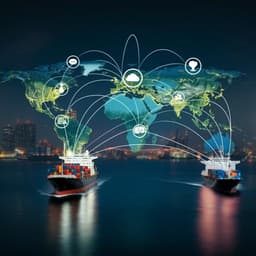
Environmental Studies and Forestry
Physical and virtual nutrient flows in global telecoupled agricultural trade networks
X. Chen, Y. Hou, et al.
This study, conducted by Xiuzhi Chen, Yue Hou, Thomas Kastner, Liu Liu, Yuqian Zhang, Tuo Yin, Mo Li, Arunima Malik, Mengyu Li, Kelly R. Thorp, Siqi Han, Yaoze Liu, Tahir Muhammad, Jianguo Liu, and Yunkai Li, reveals significant insights into the global agricultural trade's role in nitrogen and phosphorus flows over two decades. The findings highlight crucial trends that underscore the need for improved efficiency in nutrient utilization and environmental sustainability.
Playback language: English
Related Publications
Explore these studies to deepen your understanding of the subject.







